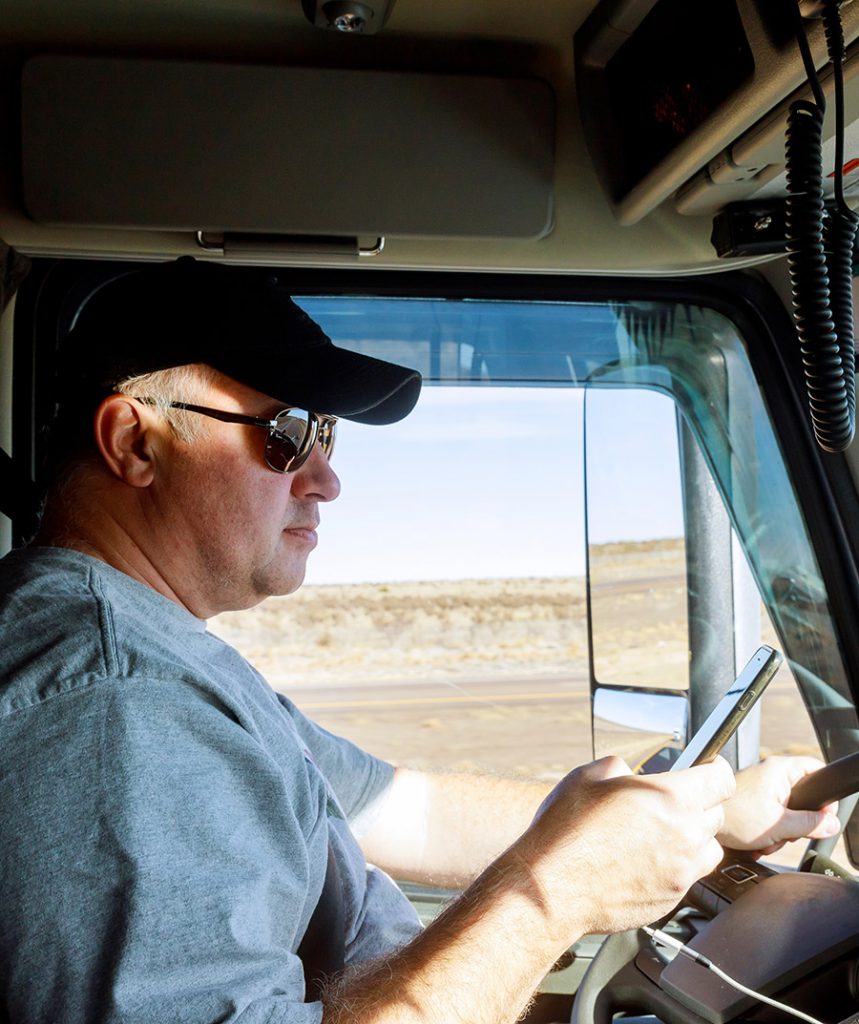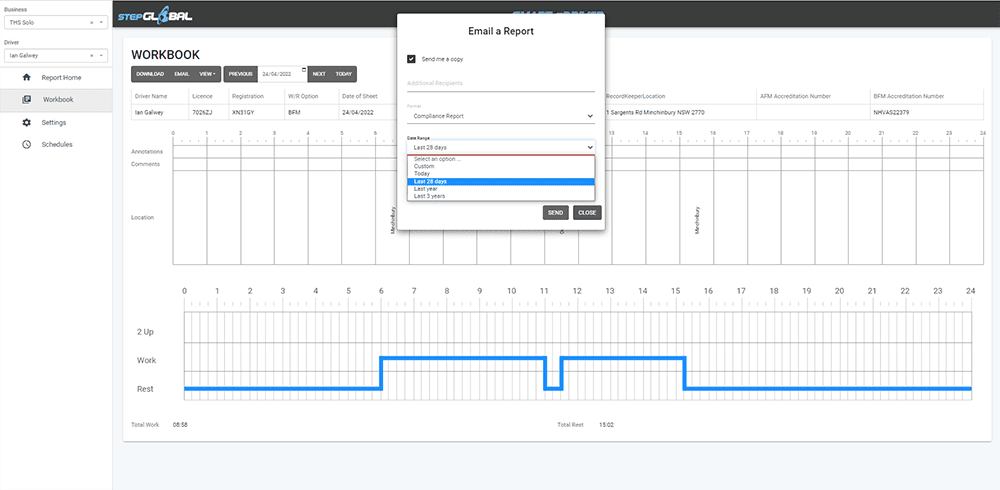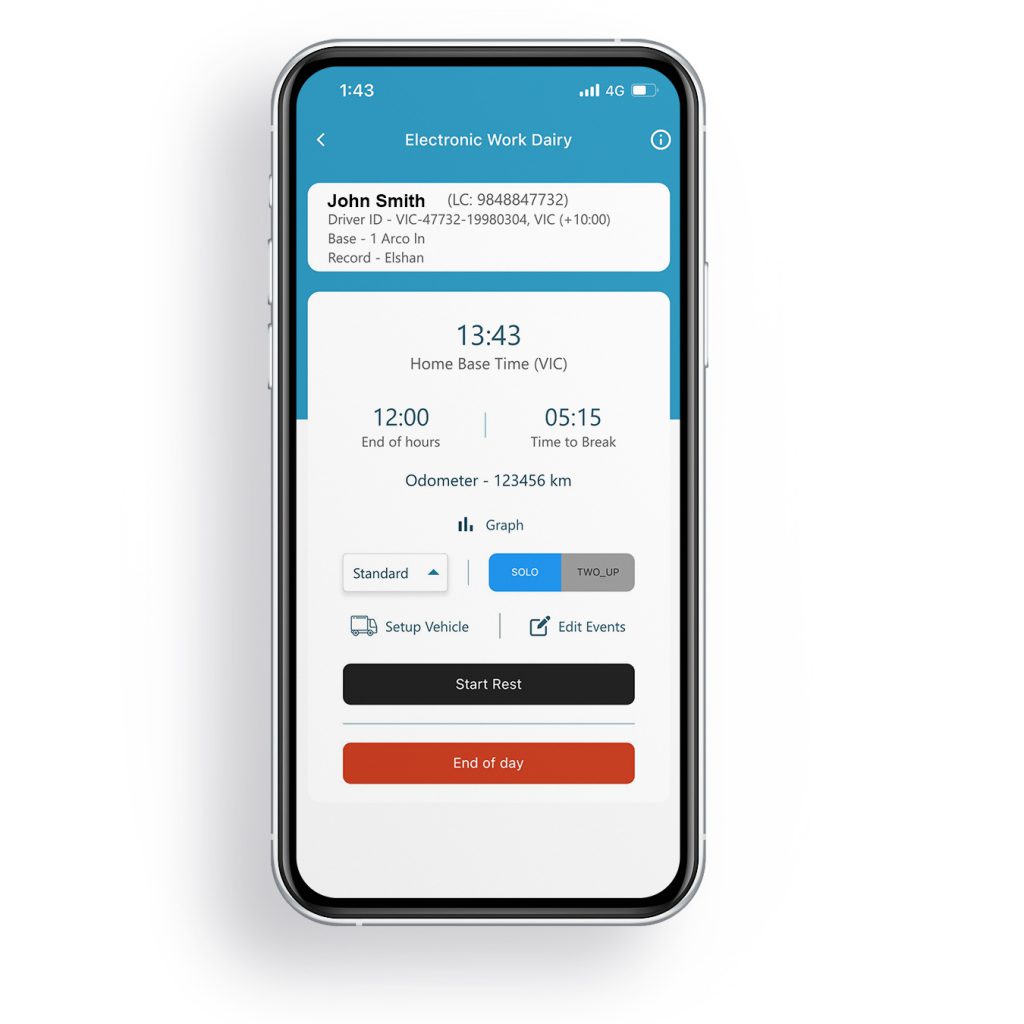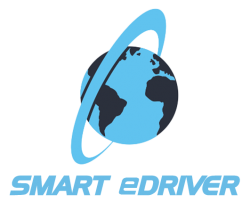What is an Electronic Work Diary (EWD)?
An EWD, also known as an electronic work diary, is an app used by Australian heavy vehicle drivers to comply with the NHVR’s work and rest time regulations. The EWD tracks all hours worked by the driver and sends automatic notifications when it is time to take a rest break or if the driver is about to be in breach. It is a digital alternative to the written work diary (WWD).
Fatigue management is a legal requirement under the HVNL (heavy vehicle national legislation) and EWDs exist to assist drivers and operators to comply with their legal obligations. All drivers must keep a record of all work and rest times. Only NHVR (National Heavy Vehicle Regulator) approved EWDs can be used for compliance purposes.

How do EWDs Work?
EWDs are apps used on mobile devices such as phones and tablets. They are developed to count time according to the NHVR’s fatigue management plans, and will usually offer both Standard and Basic Fatigue Management (BFM) options to choose from.
Once you’ve selected your fatigue plan, the app will then track your work and rest times, sending automatic notifications for rest breaks and potential breaches in accordance with the regulations outlined in your chosen fatigue plan. For example, under the Standard hours fatigue plan, in any period of 5 and a half hours, you must have a minimum rest break of 15 continuous minutes. In this case, an EWD would alert the driver periodically, before the 5 and a half hours was up, that it was almost time to take a rest break. If the driver did not take their required rest break and kept working, the app would send notifications that they were in breach of regulations.
Using the App
Once a driver begins their shift, they need to sign into the EWD. Some EWDs will offer multiple business profiles, allowing you to drive for multiple businesses and use the same EWD. If this is the case, the driver will select which business they are driving for. Once logged in and ready to begin work, the driver will select to start their shift in the EWD and start working. Once it nears time for a rest break, the EWD will send periodic automatic notifications through the app to remind the driver that their rest time is coming up. If the driver does not take their break when they should, they will receive further notifications that they are about to be in breach of fatigue regulations.
When a driver takes their break, they will hit a button in the EWD to tell it that they are taking their break. Like when working, the app will record the amount of time taken during the rest break, right down to the nearest minute. One of the advantages of an electronic work diary over a written work diary is that written work diaries only count time in fifteen-minute blocks, whereas because an EWD is digital, it can record to the nearest minute instead. Once the driver finishes their rest break, they will hit a button to inform the app when they are ready to start working again.
Once the driver has finished their shift, they can hit the end of day option in the app, and the EWD will stop recording rest and work times.
Reporting and Compliance
One of the great things about EWDs is that because everything is digital, creating and sending reports can be done in a matter of minutes.
Drivers can access their own statistics, and fleet managers can create their own customised data-driven reports. For businesses, having access to a business portal (offered by some EWD providers, but not all) is a game-changer.
Which NHVR Fatigue Plans do EWDs Use?
Most EWDs have been designed to accommodate either Standard or Basic Fatigue Management (BFM) plans. Some may also offer Advanced Fatigue Management (AFM) plans as well.
These fatigue plans have been put together by the NHVR to prevent accidents and fatalities due to fatigued driving. Each plan has its own set of work hours and rest times that are permitted under the HVNL (heavy vehicle national law).
Setting up your EWD to use these options should be as simple as selecting a fatigue plan from the settings menu in the app. Most EWDs have the ability to change which fatigue plan you are using if circumstances change.
What are NHVR Fatigue Plans?
Which fatigue plan to use with your EWD will depend on a few factors such as the business you are driving for, which training you have had, and where you are located.
There are three choices to choose from, and they are all different. To qualify for Basic Fatigue Management (BFM) or Advanced Fatigue Management (AFM) fatigue plans you will need to undertake a couple of short courses, known as units of competency.
You can find the list of accredited educators here. It is highly recommended that you undertake one of these courses. They are usually short, can be completed online, and inexpensive.
Standard Fatigue Plan
The Standard Hours fatigue plan is for drivers who have not undertaken one of the units of competency as outlined above. For this reason, the allowed work and rest times are less flexible than BFM or AFM plans. For example, in any period of 5 ½ hours, you must have a minimum rest time of 15 continuous rest minutes.
Basic Fatigue Management (BFM) Plan
The BFM fatigue plan is more flexible than the Standard fatigue plan hours. This is because to qualify for BFM hours, you must have completed courses which aim to educate drivers and businesses about fatigue-management and mitigation. In the BFM fatigue plan, in any work period of 6 ¼ hours, you must have a minimum rest break of 15 continuous minutes. When compared to Standard Hours, you can see that BFM hours allow the driver to work for longer periods.
Advanced Fatigue Management (AFM)
AFM hours are the most flexible option. Advanced Fatigue Management allows for businesses to propose their own work and rest hours based on the needs of the business, rather than by using Standard or BFM hours.
Why Use an EWD instead of a WWD (Written Work Diary)?
If you’re still tossing up whether to bin the written logbook, you may want to consider the many benefits of switching to an electronic work diary. EWDs outperform written work diaries in every way, and once you switch over, you’ll be wishing you had done it sooner!
To start with, EWDs are much more accurate at counting work and rest times because they are digital. Unlike WWDs which count time in 15-minute blocks, EWDs can record time down to the nearest minute. This is much more efficient and may even save you some precious time.
By using an EWD, drivers can save up to 50% on their reporting time. Unlike written work diaries which can be fiddly, EWDs are just a couple of button taps, and you’re good to go! And most importantly, EWDs are better than paper logbooks because they do all the thinking for you. EWDs are programmed to calculate the work and rest times for you based on the NHVR’s fatigue plans. Do away with the stress and confusion of memorising rules, and relax knowing that the EWD will alert you when it’s time to take a rest.
For fleet managers, schedulers and business owners, having your drivers using an EWD makes a lot of sense. By using an EWD with a business portal, you will have real-time access to compliance data, which can help to fulfill chain of responsibility (CoR) obligations. No more digitising manual records and double handling data; everything is recorded and uploaded automatically. EWDs allow you to make smarter scheduling decisions, with a full view of how many hours your drivers have available.
EWDs outperform written work diaries in every way. If you’re tossing up whether to toss the WWD, it is highly recommended that you consider the many benefits of switching to a digital truck work diary.
What Does an EWD Look Like?
EWD apps are designed to be intuitive and easier to use than a written work diary. In this example of the Smart eDriver app, you can see what a driver might see when they have the EWD open.
It shows the driver the current time, how many hours are left until they are required to take a break, and which fatigue plan they are currently operating under.
When the driver wants to take a rest, they can simply hit the start rest button. Or, if they reach the end of their shift, they can hit the end of day button.
EWDs can make the entire process of recording work and rest times as simple as pressing a button.
Which Electronic Work Diary is the Best?
Firstly, it is important that you ensure you are choosing an NHVR approved EWD. You can access a list of approved electronic work diaries on the NHVR’s website here. If you use an unapproved EWD, you won’t be compliant with anti-fatigue laws.
There are a few factors to take into consideration when choosing which electronic work diary to use. If you are a business owner, fleet manager or compliance officer, you may want to think about the following:
- Does your business already use a particular brand or type of mobile device? How important is it that your choice of EWD be standalone or cloud-based?
- Do you operate under Standard, BFM or AFM fatigue plans?
- How important is compliance reporting?
- What kind of support do you need?
If you are a solo driver, you may be more interested in thinking about the following:
- Do you drive for multiple businesses? Does your choice of EWD need to accommodate multiple profiles?
- Do you want flexibility around which type of device you use?
- How tech-savvy are you? Do you want to find an EWD that operates like the written work diary does?
- If something doesn’t go to plan, what kind of support do you need?
While there are several electronic work diary apps approved by the NHVR, they are all quite different. When weighing up which one to use, many people find that flexibility is the thing that makes all the difference. Choosing an EWD that is cloud-based and can be downloaded directly from the Google Play Store or Apple App Store can solve a number of potential headaches down the line.
Unlike other Australian EWDs, Smart eDriver doesn’t require telematics or connection to the vehicle to function. It is a simple cloud-based app that can be downloaded into your mobile device. It also doesn’t require any specific brand or model of device to function, unlike other EWDs available. If your mobile or tablet isn’t already on the NHVR-approved device list, the team at Smart eDriver can undertake testing to get it approved.
The Smart eDriver business portal also offers business owners, fleet managers and compliance managers access to powerful compliance reports. Basic access is included free of charge with each driver charge. Custom reports can be created for a small monthly fee.
The app accommodates Standard, Basic Fatigue Management (BFM) and Advanced Fatigue Management (AFM) fatigue plans*.
Billing isn’t complicated, either. Smart eDriver billing consists of one monthly charge with no hidden fees. You are welcome to cancel at any time. And as an added bonus, the app is also Australian developed, owned and operated, so you’ll always have access to local support if you need it.
Smart eDriver was the first NHVR-approved EWD to be released into the Australian market in 2020, and it has stood the test of time. It is flexible, simple to use and offers powerful compliance capabilities. When choosing an EWD, the Smart eDriver app is a great choice.



